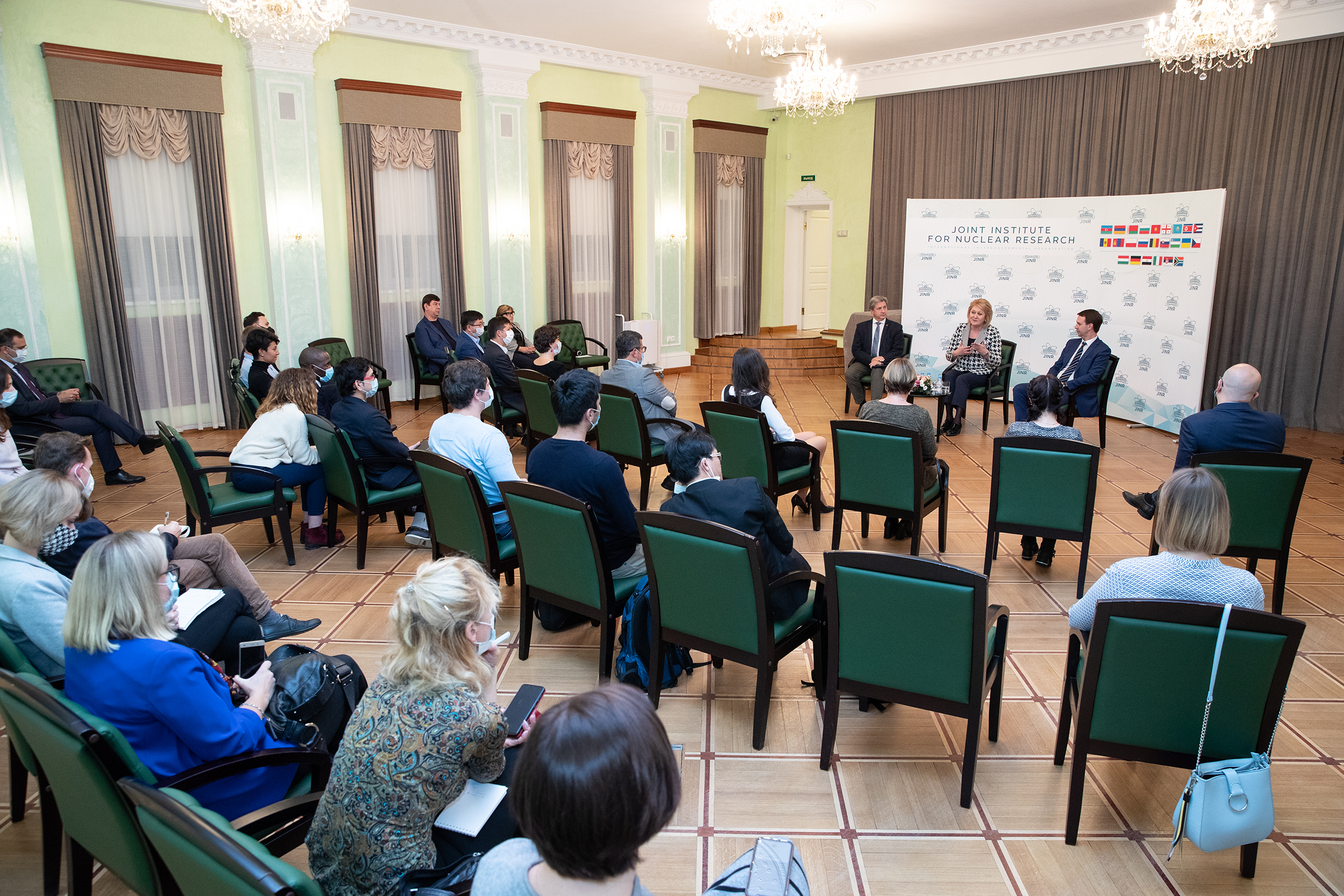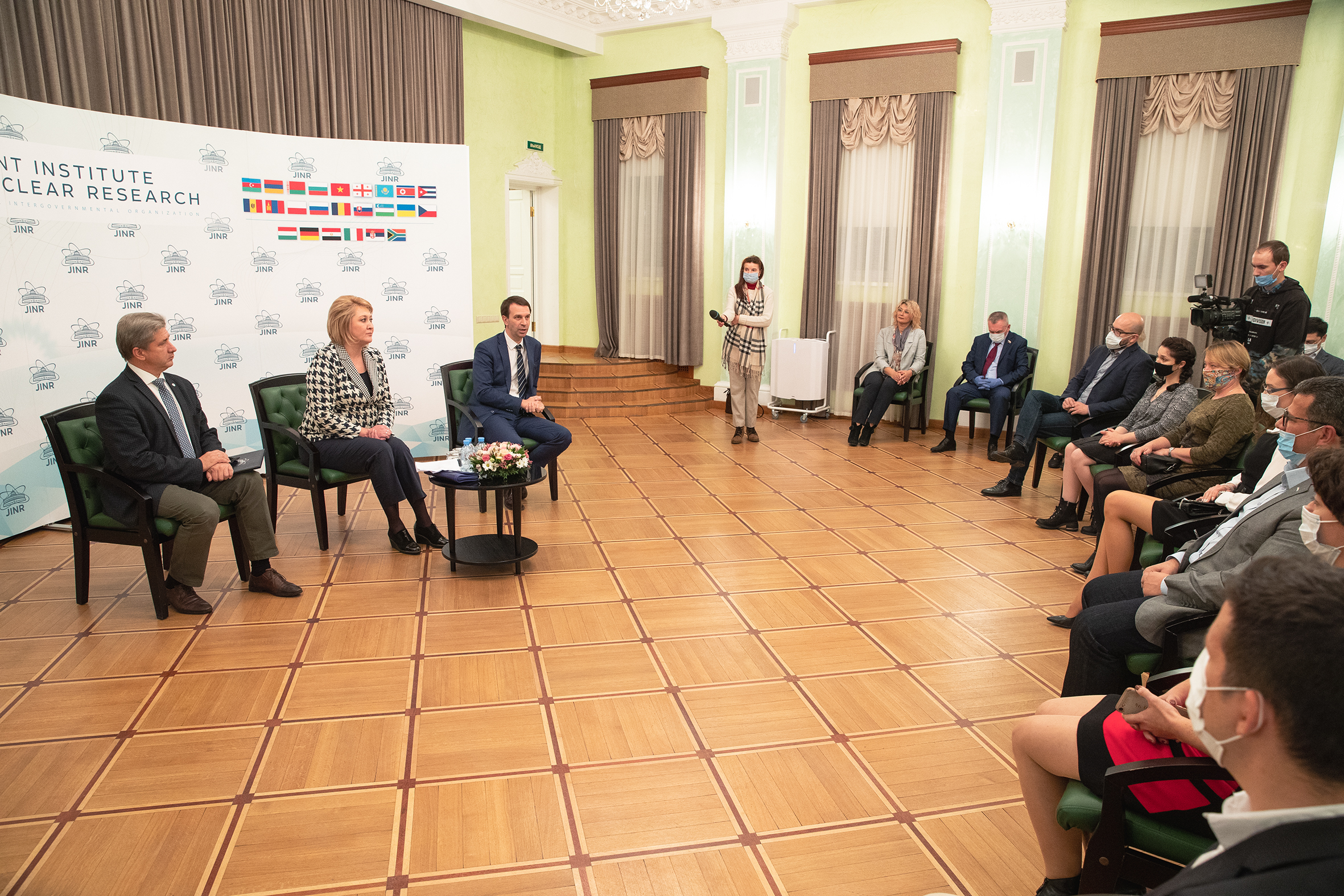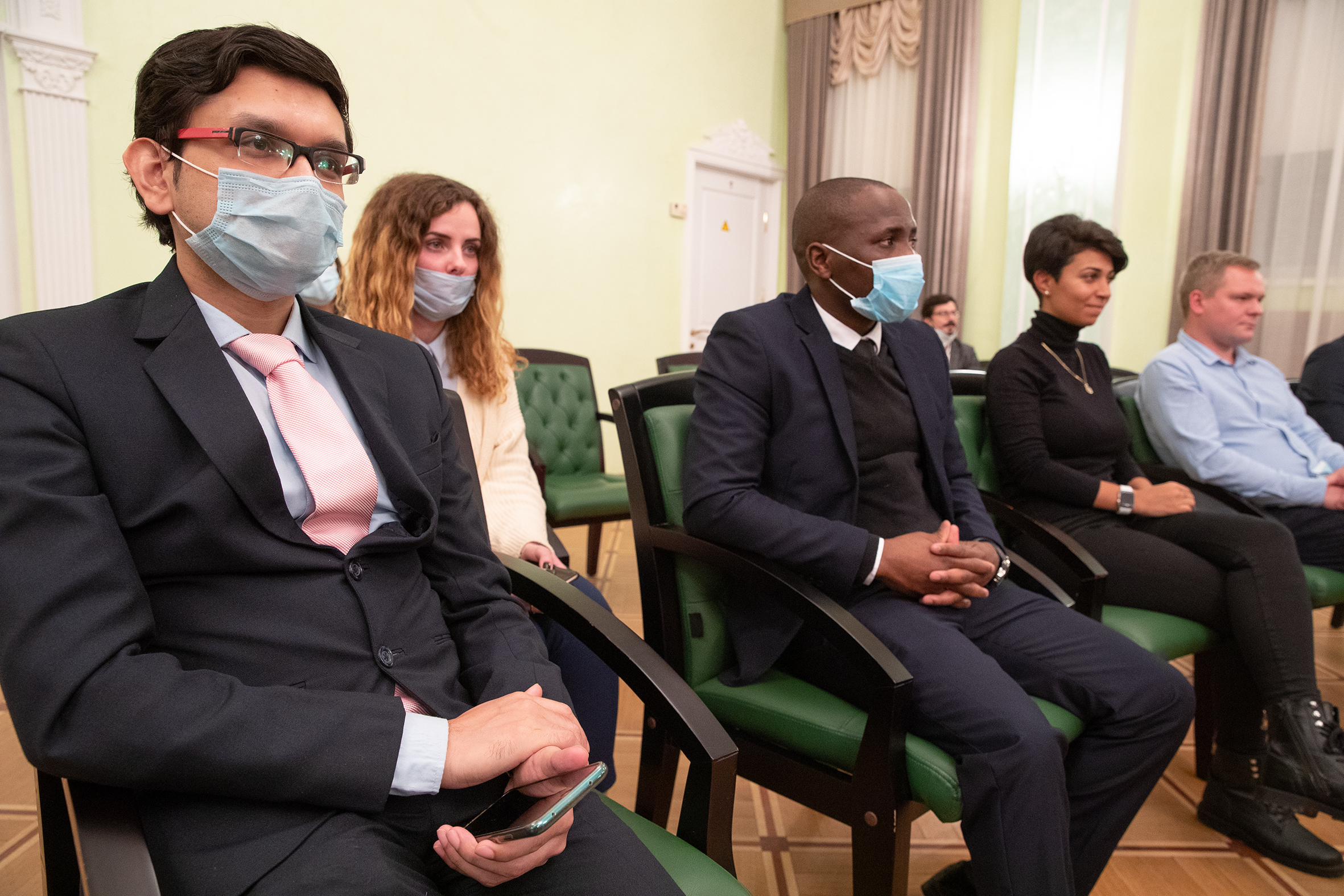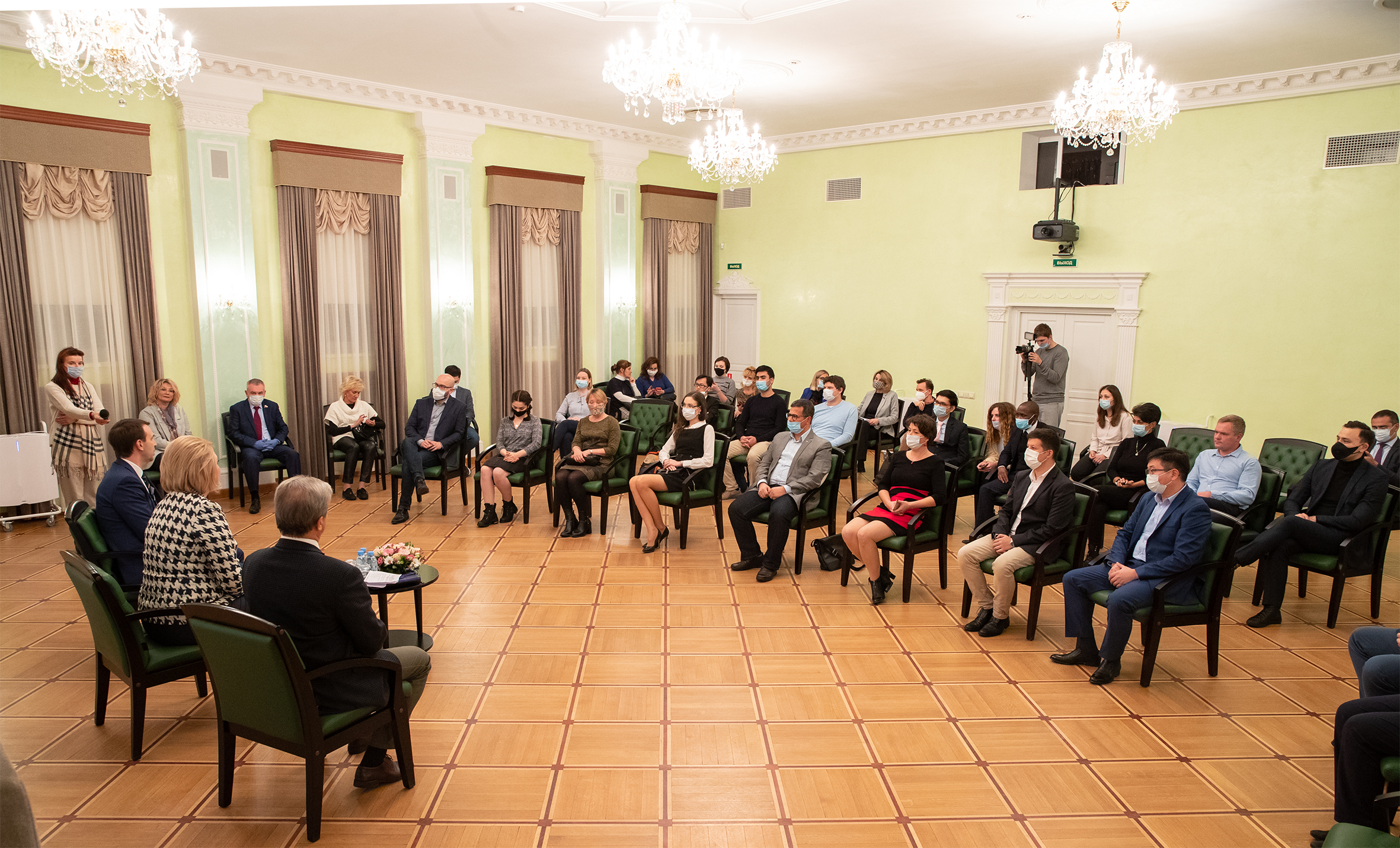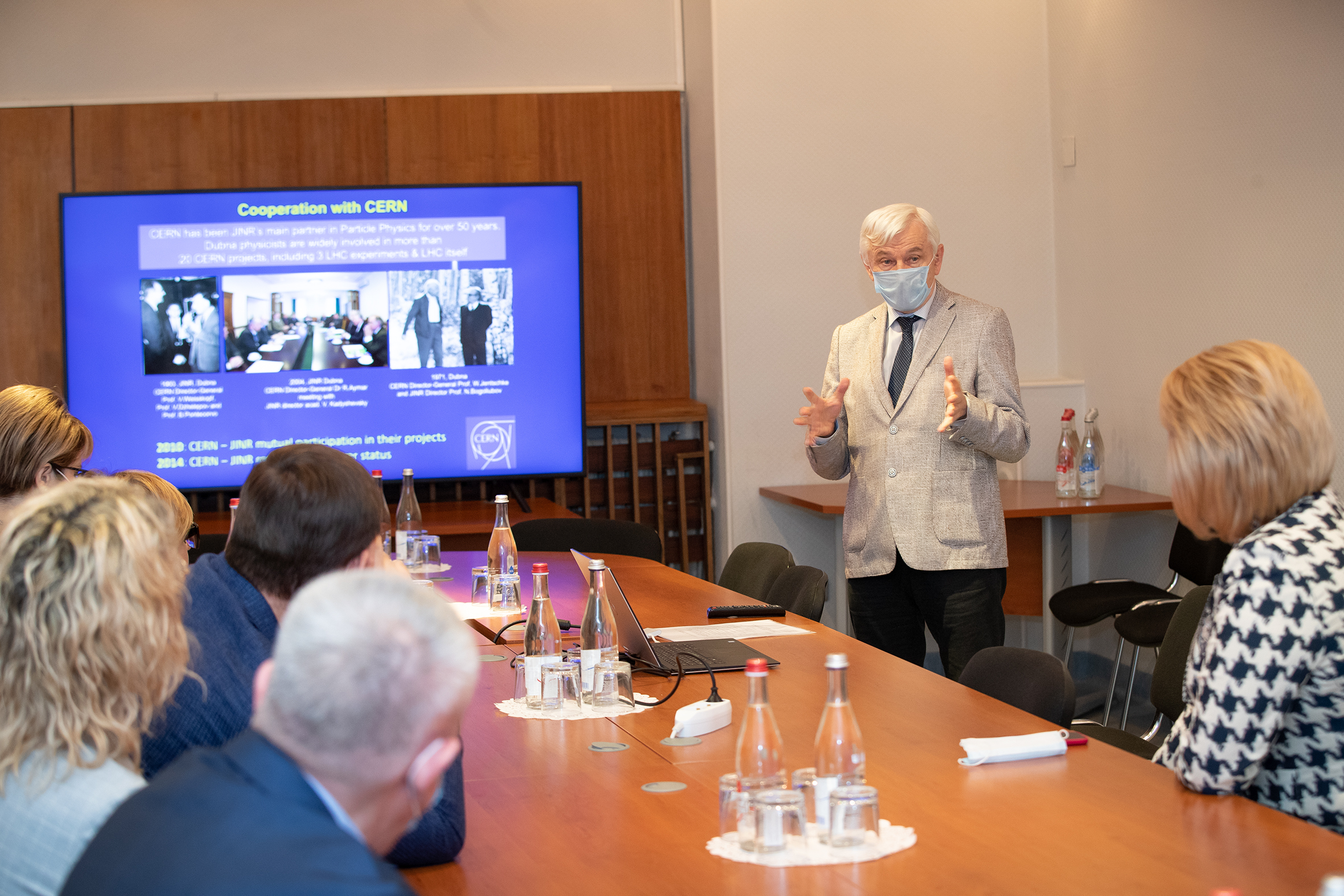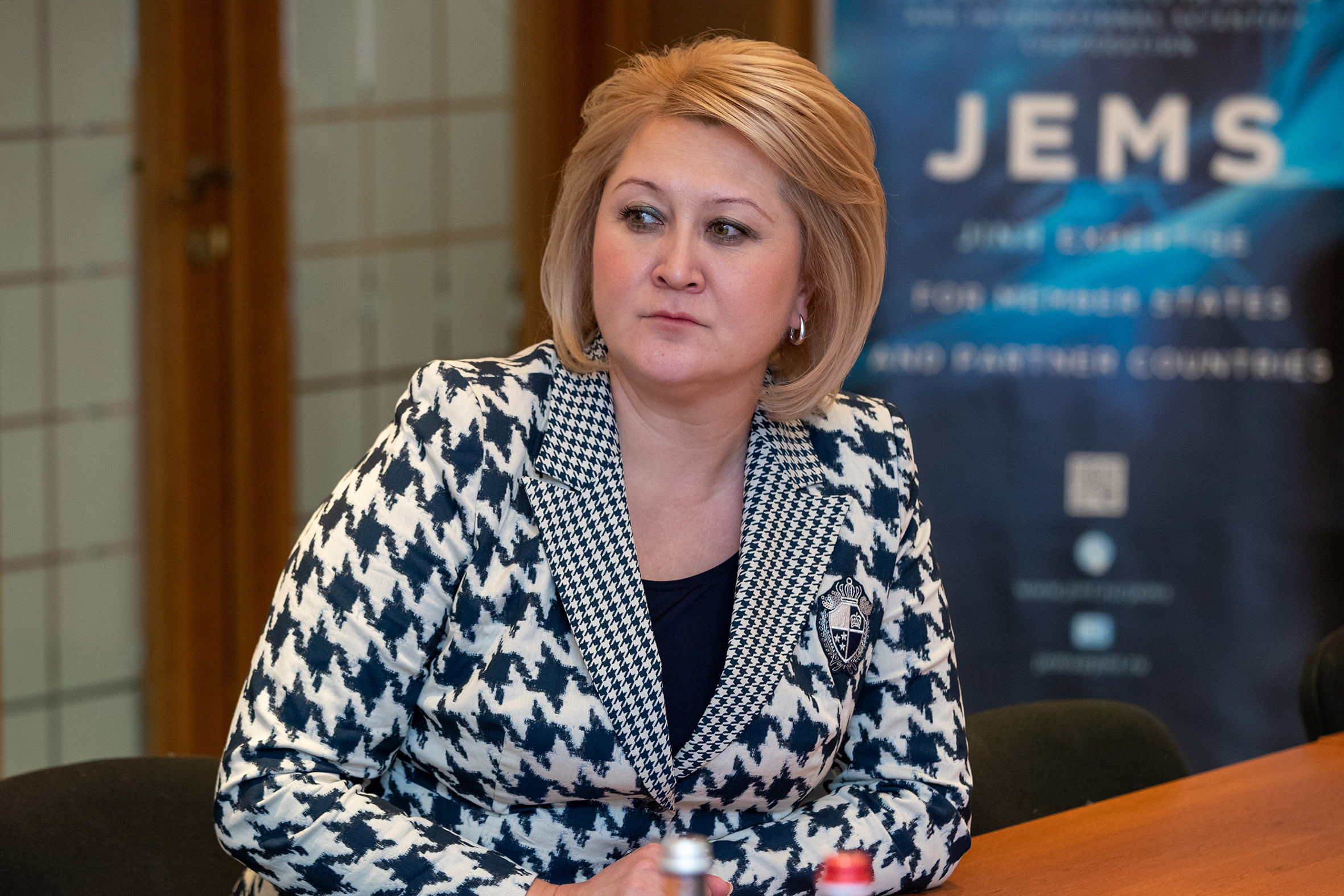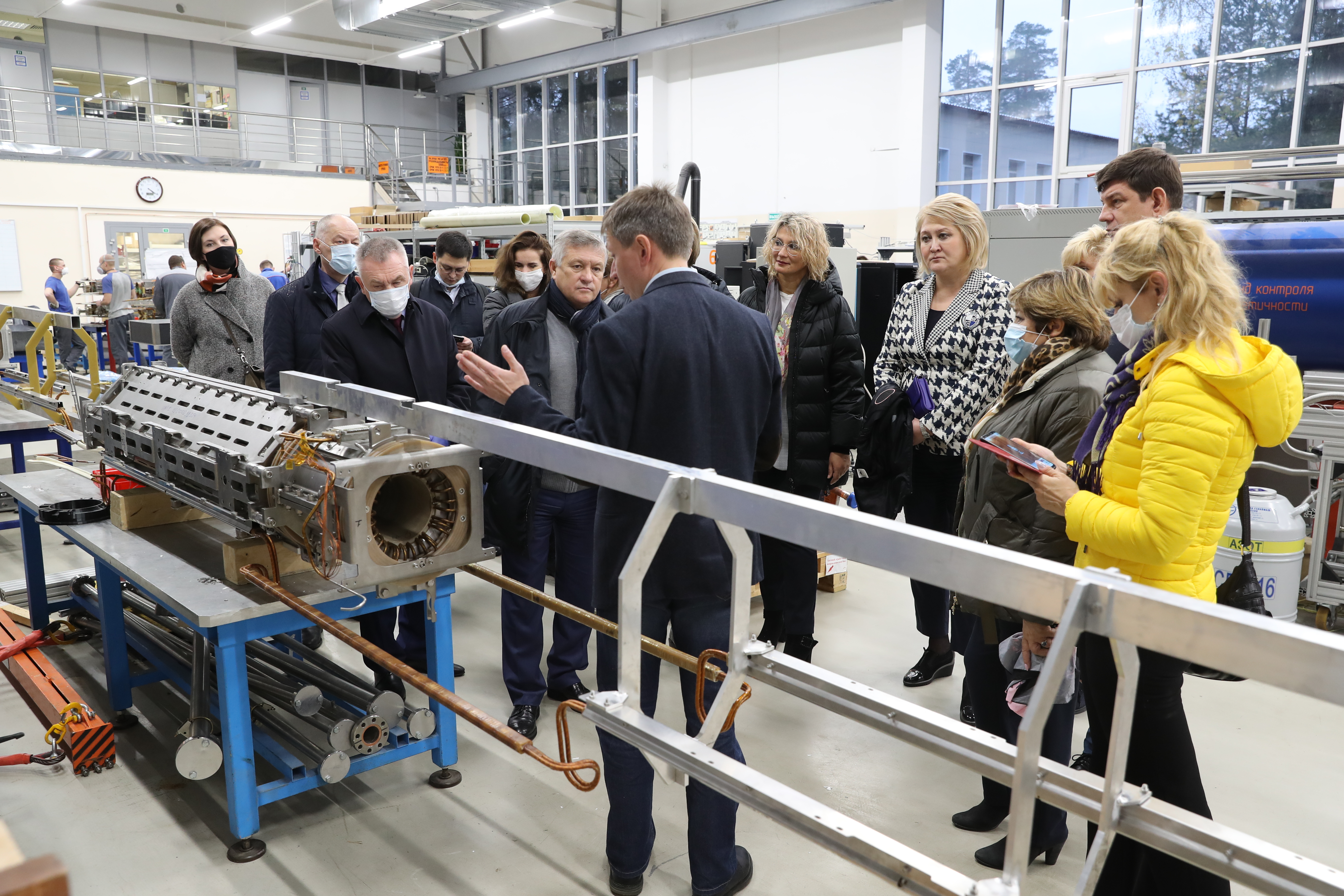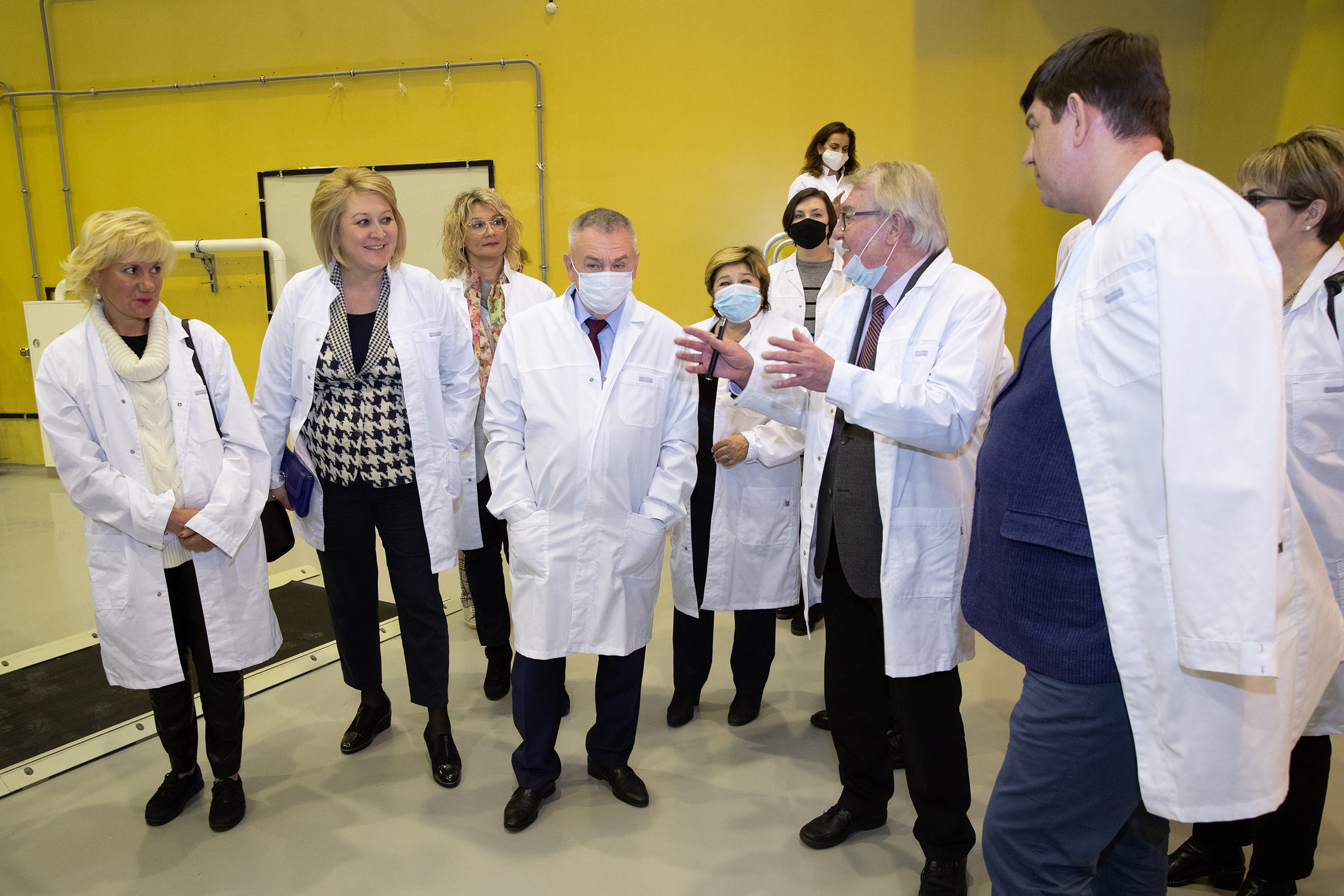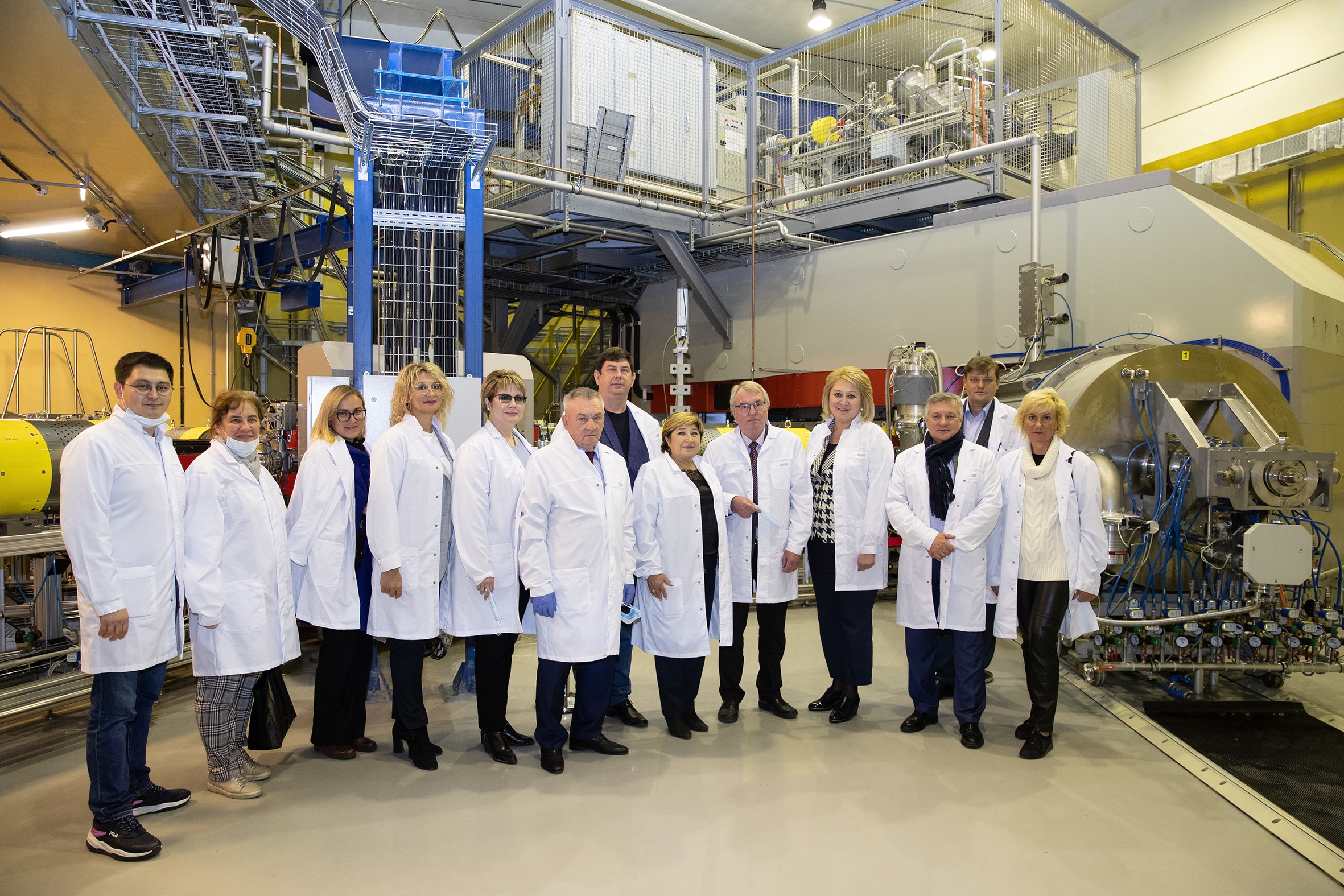At the meeting of Chairman of Federal Council Committee with JINR youth
News, 27 October 2020
On 22 October, on the eve of a meeting of the Federation Council Committee on Science, Education and Culture of the Federal Assembly of the Russian Federation, Speaker Lilia Gumerova and members of the Federal Council Committee met with the international team of JINR young scientists from the Member States of the Joint Institute. Staff members from Botswana and India also joined the meeting. The management of JINR was represented by JINR First Vice-Director Grigory Trubnikov, Head of the JINR International Cooperation Department Dmitry Kamanin and Assistant to First Vice-Director Irek Suleimanov.
The meeting had a warm and friendly atmosphere, and young scientists told the Speaker of the Federal Council Committee about the fields of JINR research the interest in which had led them to the Joint Institute, as well as about their current scientific activities.
During the meeting, participants discussed prospects for the Institute’s development to attract new countries and increase the status of the JINR Associate Members, as well as to ensure the Institute’s participation in the development of national science in the Member States, the creation of research and information centres in them, training of scientific and engineering staff.
The discussion reflected also new challenges of the international agenda. JINR young scientists presented scientific papers and studies made by the Joint Institute that are related to the fight against the COVID-19 coronavirus pandemic. FLNP is participating in joint research of cell membranes containing transmembrane proteins, in particular of the SARS-CoV-2 virus. FLNP is also taking part in the study of formation of neutrophil protective mechanisms for defence against viruses. FLNP is monitoring the dynamics of industrial pollutions on the background of the pandemic as well. FLNR applied developments on track membranes were presented. They may be used to create protective masks and respirators as well as for the tasks of plasma depletion from cured patients with COVID-19 antibodies to immunize healthy people. LIT takes part in the fight with COVID-19 providing its computing infrastructure to the Folding@Home (F@H) project. It uses distributed computing to carry out computer modelling of protein molecule folding for the study of the 2019-nCoV coronavirus.
The discussion also included JINR pioneering experience in the fields of proton therapy. The necessity to develop and scale up this experience for the potential creation of an innovative centre of nuclear technologies in Dubna was noted. It is planned that JINR will develop proton therapy methods as well at this centre, and this requires from JINR and the city the search for a competent medical partner. Grigory Trubnikov informed about active discussions underway with LRB, DLNP, FLNR, LIT on plans for designing and creating such a centre next year. It is expected that the centre will develop technologies and methods of treatment with the participation of the medical staff. Moreover, it is planned to provide treatment to small groups of patients from the JINR Member States, first of all. In addition, one of the tasks of the centre will be to train highly qualified medical and scientific personnel. It is expected to apply the accumulated experience to promote the creation of similar proton therapy centres in the Member States.
Lilia Gumerova expressed her vivid interest in the information presented by JINR young scientists by addressing a number of questions to the speakers. She also highlighted the importance of applying fundamental scientific research and proposed to carry out a comprehensive analysis of the scientific aspect of the Institute’s activities to find out opportunities for their use in an applied field. On behalf of the Committee, she also expressed readiness to assist in this direction. Grigory Trubnikov highlighted the importance of the development of the applied fields of JINR studies and noted that in addition to the mentioned innovative centre of nuclear technologies, the idea to create a centre for support of start-ups was also discussed. These start-ups may be implemented by students from universities of the Member States as their scientific and graduation papers. He also noted that the regulatory support for intellectual property from Russian authorities would be important in this regard.
Participants also discussed the social aspect of work of scientists from the JINR Member States and their life in Dubna. The issues that need to be addressed in the field of urban health and transport links with Moscow were mentioned.
At the end of the meeting, Lilia Gumerova noted that the acquaintance with JINR that deeply impressed the Committee’s members and information obtained at the event would be important for the Committee at the upcoming meeting. Summing up the result of the event, the Speaker of the Committee proposed to continue the acquaintance with the Joint Institute and hold JINR Days in the Federation Council.
On the same day, on 22 October, the first part of the working programme was devoted to the introduction of members of the Federation Council Committee to the Joint Institute. The acquaintance began with a welcoming meeting in the JINR Directorate where JINR Vice-Director Richard Lednický made an introductory presentation about the Institute’s activities, objects of its scientific infrastructure and major fields of scientific studies. After that, members of the Committee’s delegation had an excursion to the Laboratory of High Energy Physics guided by VBLHEP Director, Leader of the NICA mega-science project Vladimir Kekelidze. Guests visited the construction site of the complex of superconducting rings at colliding heavy-ion beams NICA, learned about the progress towards implementation of the project, and visited the factory of superconducting magnets. In the Laboratory of Nuclear Reactions, the delegation accompanied by JINR Vice-Director Sergey Dmitriev and FLNR Director Sergey Sidorchuk visited the Superheavy Element Factory where they learned about the key facility of the Factory, namely the DC-280 cyclotron. Guests also learned about the study of the laboratory on the synthesis of superheavy elements.
After acquaintance with the NICA project in VBLHEP, Speaker of the Committee Lilia Gumerova gave a short comment to the Institute’s mass media: “Today, we had a unique opportunity to get acquainted with the infrastructure of this wonderful scientific city.<…> The most important thing we have seen here today was what Russian science lacks: as a rule, we sell so little technologies. We can see here large-scale fundamental science requiring considerable human resources, time, intellectual sources. Nevertheless, the implementation process of the project has been constantly developing, new technologies have been made. Now, these technologies are constituents of this large-scale project that interests our foreign partners. The theme of the Committee’s guest meeting is international scientific collaboration. And we have seen that there is interest in our technologies: leading foreign scientific partners help implement the world-level mega-science project underway in Dubna, in the territory of the Russian Federation. I know that there will be interesting reports tomorrow, we have preliminary drafted the Committee’s decisions. The draft includes legislative initiatives that will help early implementation of such projects and promotion of Russian science, including at the world level. We would also like to highlight the following: we see how complicated, turbulent is the world today, and scientific diplomacy is a field of our interaction that unites everyone for the sake of peace, in order to overcome modern challenges. Such collaboration is exactly what is necessary nowadays not only for Russia but the whole world society.”
